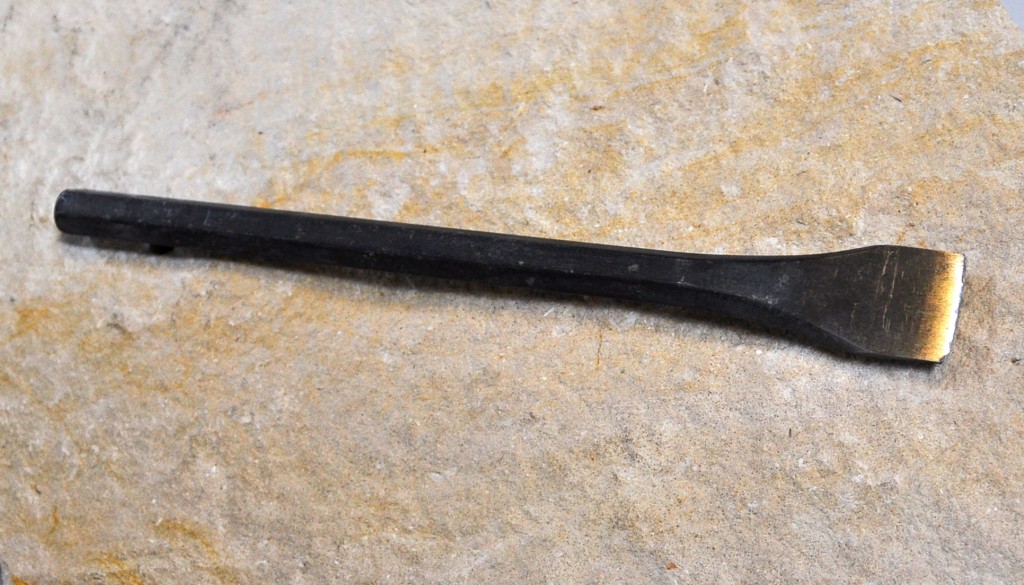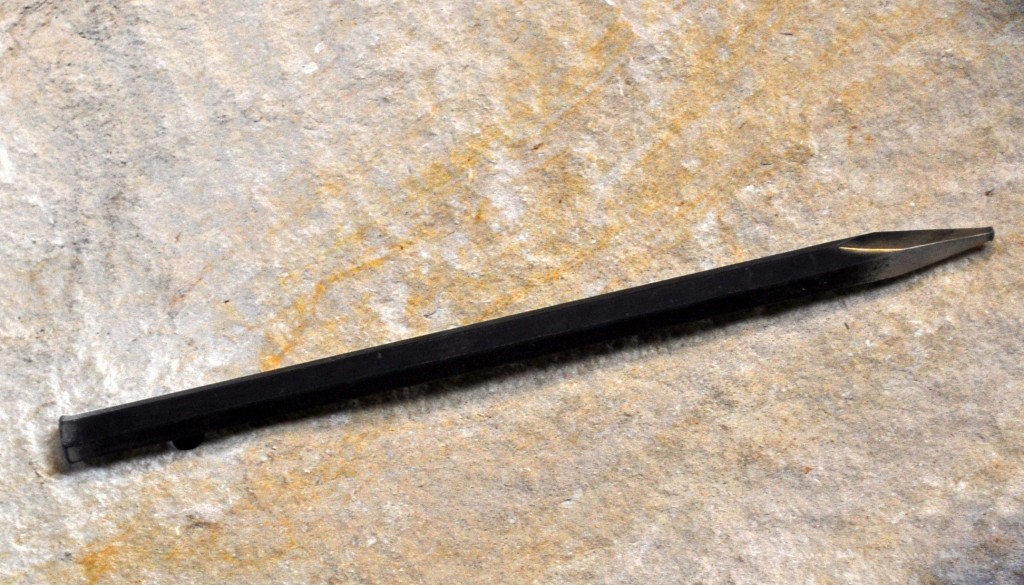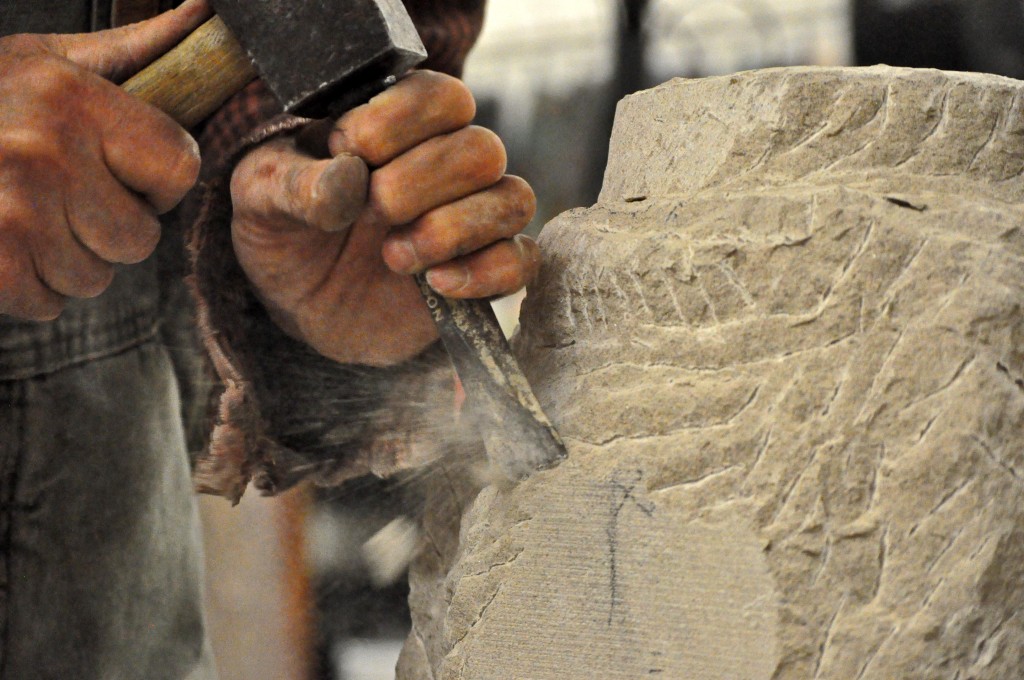Each of the four standard types of chisels (point, claw, flat, and roundel) has a distinctive shape that results in unique marks left on the stone. Each tool has its own purpose and is used for different stages of sculpting.
Many tools found from certain periods in archaeological excavations worldwide are similar to those from other eras. The Nasher Museum of Art has in its collection an ancient Greek bronze chisel dating to the early Bronze Age (c. 3200-2000 BCE), which appears to have a flat or roundel edge and is comparable to those of medieval masons, and even similar to the tools modern sculptors use.
Working with these tools for many years, master stone carvers know how to manipulate the chisels precisely. A master stone carver understands the exact angle, amount of applied pressure, and the sound of the perfect pitch from the hammer’s blow. These chisels and other tools become a physical extension of the artist’s translation of two-dimensional shapes into three-dimensional forms.
- Ancient Greek Chisel. Bronze, 6 x 1 inches. Nasher Museum of Art, Durham, NC. Gift of Barbara Newborg, M.D., from the collection of Walter Kempner, M.D., 2006.1.185
- Claw Chisel, photo by Jessica Pissini
- Flat Chisel, photo by Jessica Pissini
- Point Chisel, photo by Jessica Pissini
- Roundel Chisel, photo by Jessica Pissini
- “Tool Chart.” Sculpture: Processes and Principles. Rudolph Wittkower. New York: Harper and Row, 1977.
- Hammer and Chisel, photo by Jessica Pissini
- Claw chisel in action, photo by Jessica Pissini
- Flat chisel in action, photo by Jessica Pissini
- Flat chisel in action, photo by Jessica Pissini
- Point chisel in action, photo by Jessica Pissini
- Rasp in action, photo by Jessica Pissini











